Just like any other database, PostgreSQL requires management and monitoring to perform as it should. PostgreSQL Enterprise Manager is a popular PostgreSQL manager that allows you to monitor and manage multiple Postgres clusters from one convenient GUI. The Postgres Enterprise Manager helps you become more efficient at optimizing database performance and accomplishing routing tasks, including backups and bulk changes.
However, other PostgreSQL administration tools available on the market may be better suited to your specific requirements. This guide will review some of the best PostgreSQL manager tools available, to help you make an informed decision. Overall, I feel SolarWinds® Database Performance Monitor (DPM) ranks highest as the most user-friendly, versatile, and advanced PostgreSQL manager. Before considering other Postgres Enterprise Manager alternatives, let’s first take a brief look at what a PostgreSQL database is.
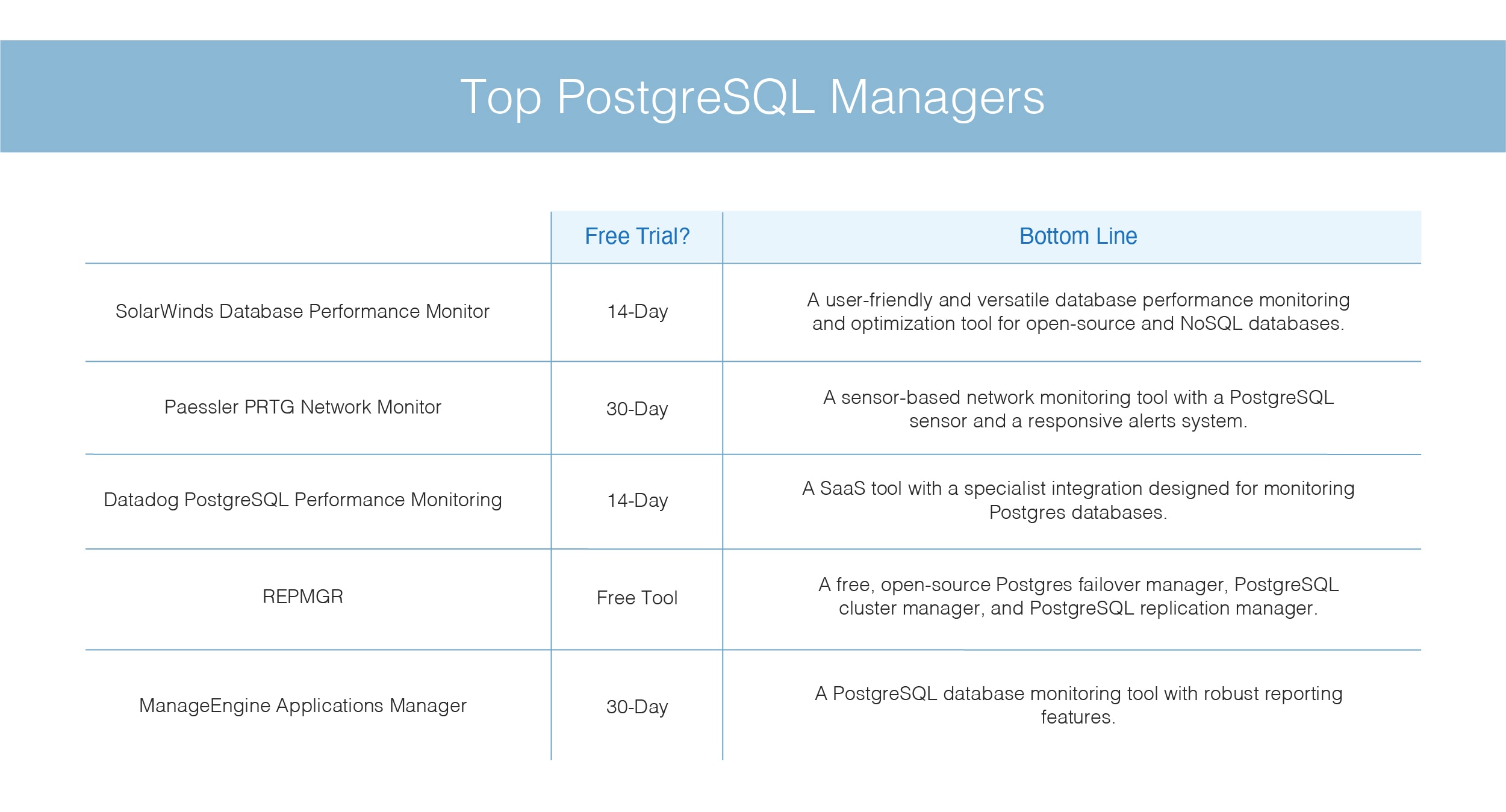
What Is PostgreSQL?
PostgreSQL is a powerful, open-source object-relational database system that uses and extends the SQL language. PostgreSQL combines this use of SQL with a range of features designed to safely store and scale even the most complicated data workloads. The creation of PostgreSQL dates back to 1986 as part of the University of California’s POSTGRES project at Berkeley. It’s been in active development on the core platform for more than 30 years.
PostgreSQL has become a popular database option on account of its proven architecture, data integrity, reliability, robust feature set, and extensibility. It also benefits from a vast and dedicated open-source community continually delivering innovative, performance-enhancing solutions. PostgreSQL is a versatile database and runs on all major operating systems. It has been ACID-compliant for almost 20 years and uses powerful add-ons—like the PostGIS geospatial database extender—to extend its capabilities. PostgreSQL has become the open-source relational database of choice among organizations and individuals alike.
Top Postgres Enterprise Manager Alternatives
To make the most of PostgreSQL’s capabilities and ensure it’s performing as it should be, you should leverage a SQL manager for PostgreSQL or a PostgreSQL administration tool. While Postgres Enterprise Manager is a reliable choice in widespread use, it’s worth considering alternatives to determine which Postgres DB manager is best suited to your needs and expectations. This guide will consider tools versatile enough to serve as Postgres failover managers, PostgreSQL cluster managers, PostgreSQL replication managers, and more.
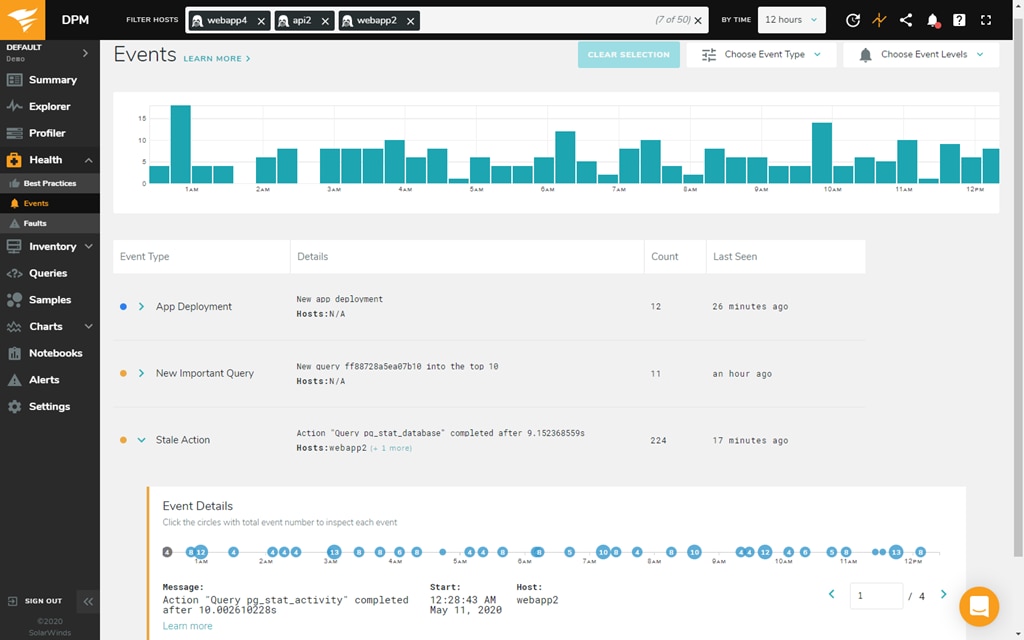
SolarWinds DPM is a database performance monitoring and optimization tool for open-source and NoSQL databases. This highly versatile PostgreSQL manager has numerous use cases and can deliver 24/7 real-time database health monitoring, troubleshooting and diagnostic capabilities, infrastructure cost savings, and much more.
As a PostgreSQL administration tool, DPM provides the performance data needed to identify PostgreSQL performance issues. DPM measures throughput, latency, index usage, errors, warnings, execution plans, and much more—for every query executed, in microsecond resolution. This PostgreSQL manager also offers a feature called Top Queries, which displays a master-detail view of servers in your application.
The Top Queries view is complemented by per-second drill-down into samples of queries, EXPLAIN plans, and cross-correlations with other key metrics, such as CPU and I/O. With DPM, you can drill down from a global view to a single problem query on a single server instantaneously. You are also able to thin-slice queries, databases, and users and compare across time periods to facilitate before-and-after change analysis.
DPM is built to give users deep insight into a broad set of PostgreSQL metrics. This includes monitoring and classifying multi-dimensional data on every user, query, database, disk, CPU, process, and other system components. This tool can capture thousands every second from every system it monitors, far exceeding the standard counters and metrics exposed by PostgreSQL. The combination of granular data and down-to-the-second data collection gives you the ability to diagnose and solve performance issues typically in minutes.
There’s much more to like about SolarWinds DPM, including cloud-based monitoring, simple installation with auto-discovery, data encryption in-flight and at-rest, adaptive fault detection, and much more. DPM is a PostgreSQL manager delivering an impressive range of features via a user-friendly and dynamic interface. There is no learning curve and you can get started monitoring and managing your PostgreSQL database quickly. A 14-day free trial of DPM is available.
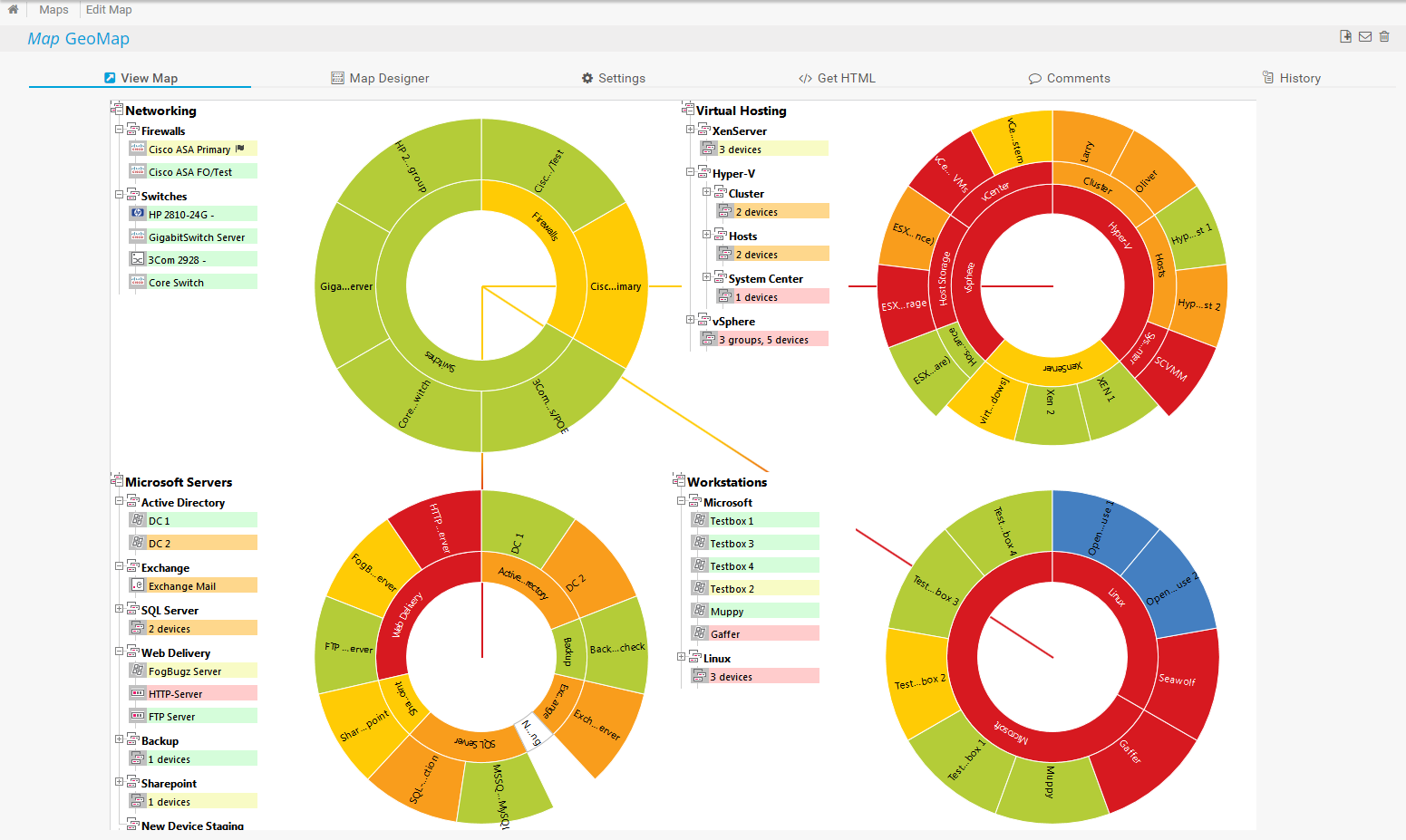
Paessler PRTG Network Monitor is primarily a network monitoring tool, but it includes a sensor designed to monitor PostgreSQL databases. The PostgreSQL sensor can monitor the execution time of the request, the number of rows addressed by the query, and the execution time of the query, in addition to accessing data table information. This information is displayed in the form of dials, giving you colorful, at-a-glance visibility. You can view these details as live data, historic data, or over the course of two, 30, or 365 days.
PRTG uses notifications—sent via email, SMS, or push notification—to keep you informed. When a threshold is breached, you’ll receive an alert, helping to ensure you can continue to monitor sensors even when you’re away from your desk. Push notifications are compatible with Android and iOS devices.
Despite being a sophisticated and enterprise-grade tool, a free version of PRTG Network Monitor is available, provided you use less than 100 sensors. As a sensor-based solution, PRTG is what you make of it, allowing you to combine PostgreSQL database monitoring with as many other monitoring sensors as you’d like. If you’d like to try PRTG Network Monitor premium edition, you can download a 30-day free trial. This gives you access to unlimited sensors.
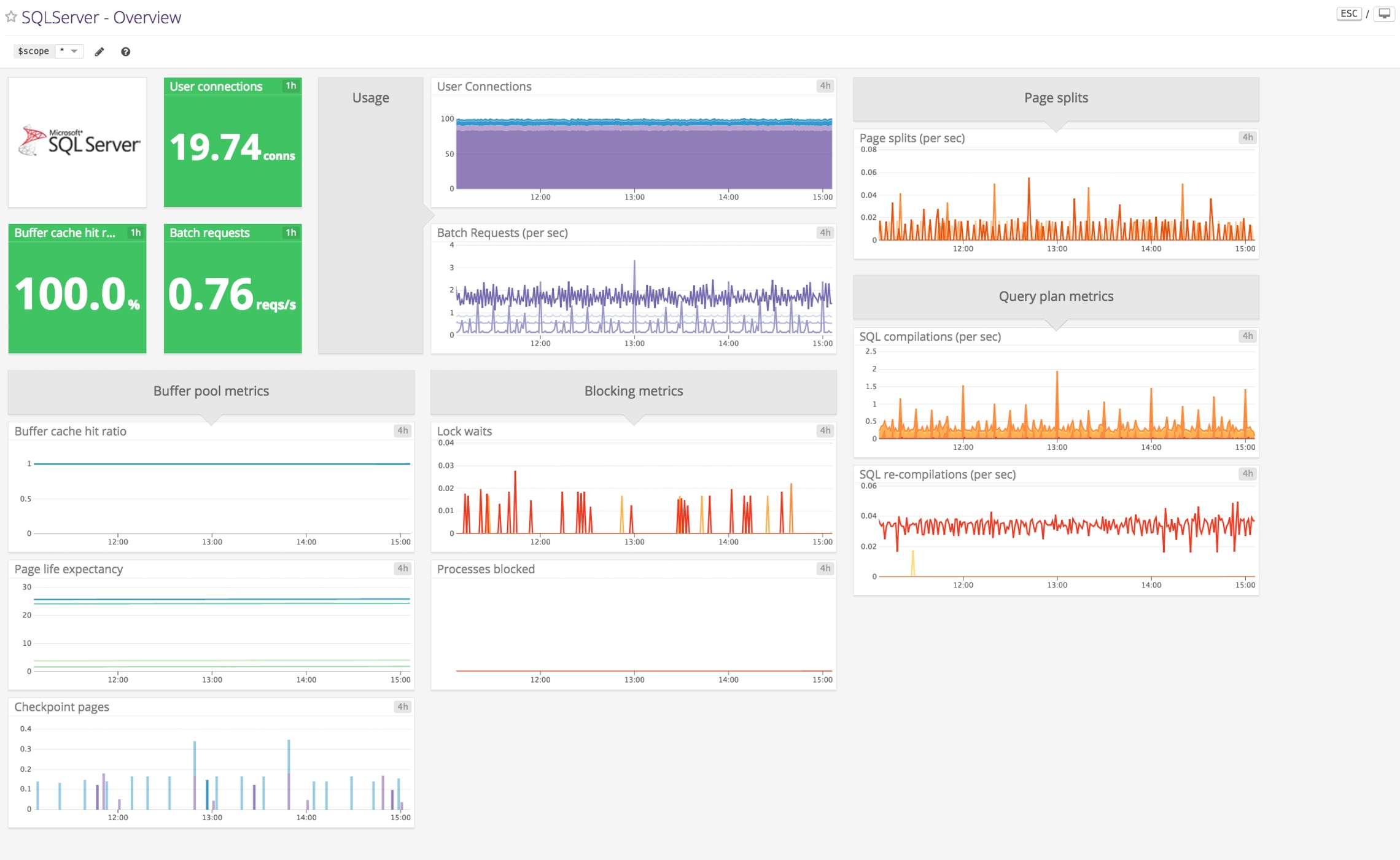
Datadog is a Software as a Service (SaaS) platform with a range of system monitoring tools. The Datadog APM module features a specialist integration designed for monitoring Postgres databases. This SQL manager for PostgreSQL tracks the operating throughput of the RDBMS and proactively identifies inefficient queries consuming resources.
Datadog Postgres monitoring dashboard is packed with data visualizations, which can be slightly overwhelming. You can manage this flood of information by establishing thresholds and alerts. When a threshold is breached, you’ll receive a notification, eliminating the need to keep a constant eye on the dashboard metrics.
The Datadog dashboard is customizable, allowing you to reorganize information to reflect your priorities. You can also create stack views covering the services supporting your Postgres database, in addition to the RDBMS and query performance. If you want to try the Datadog unlimited monitoring package, you can download a 14-day free trial here.
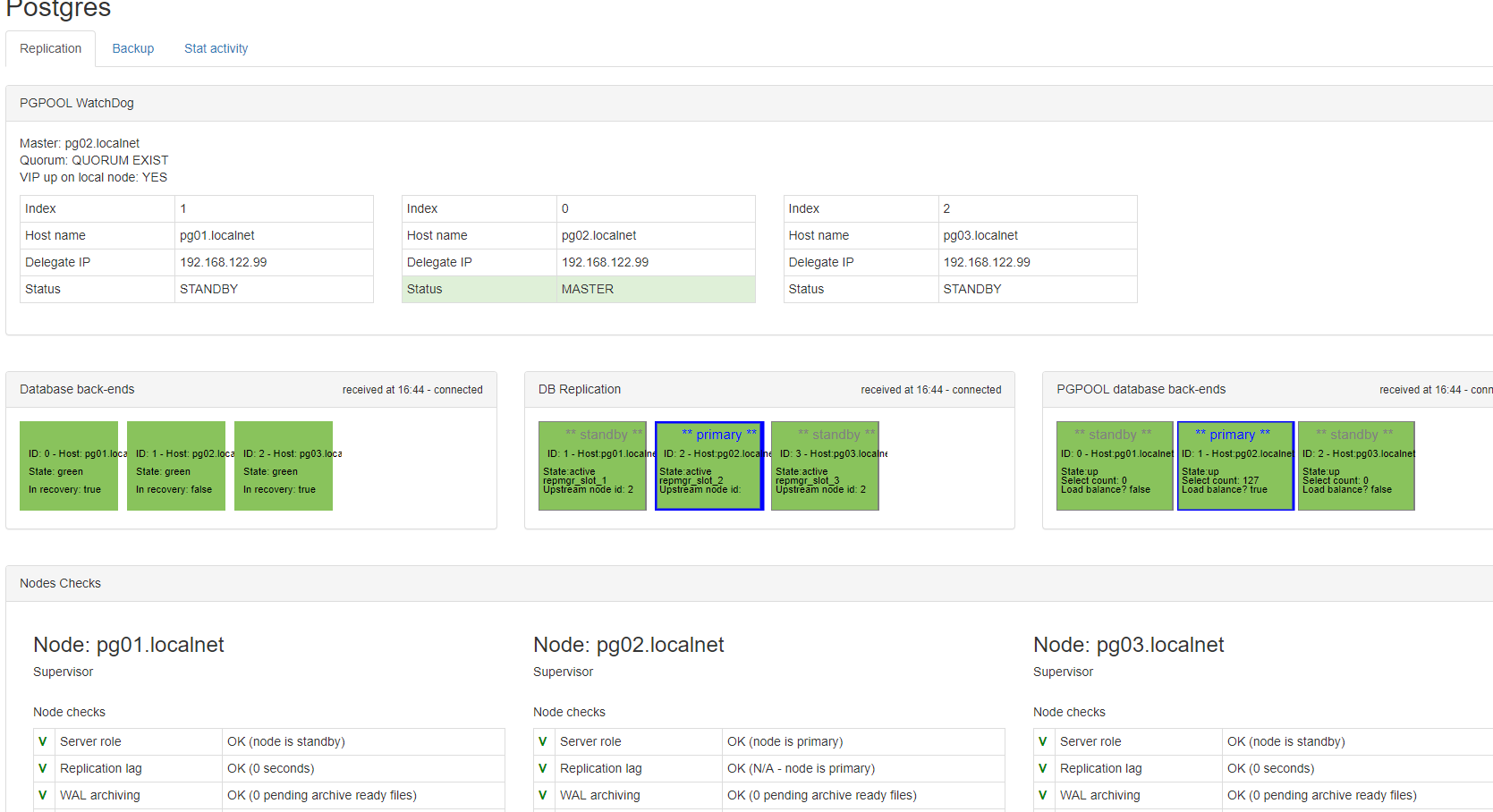
REPMGR is an open-source Postgres failover manager, PostgreSQL cluster manager, and PostgreSQL replication manager. PostgreSQL’s built-in hot-standby capabilities are enhanced by REPMGR, which can set up standby servers, monitor replication, and perform administrative tasks such as failover or manual switchover operations.
REPMGR offers advanced support for PostgreSQL’s built-in replication mechanisms, and the latest REPMGR series supports the latest developments in replication functionality. This includes cascading replication, timeline switching, and base backups via the replication protocol.
REPMGR works on Linux and most UNIX-like systems, including Mac OS X. This PostgreSQL manager is free and can be downloaded here.
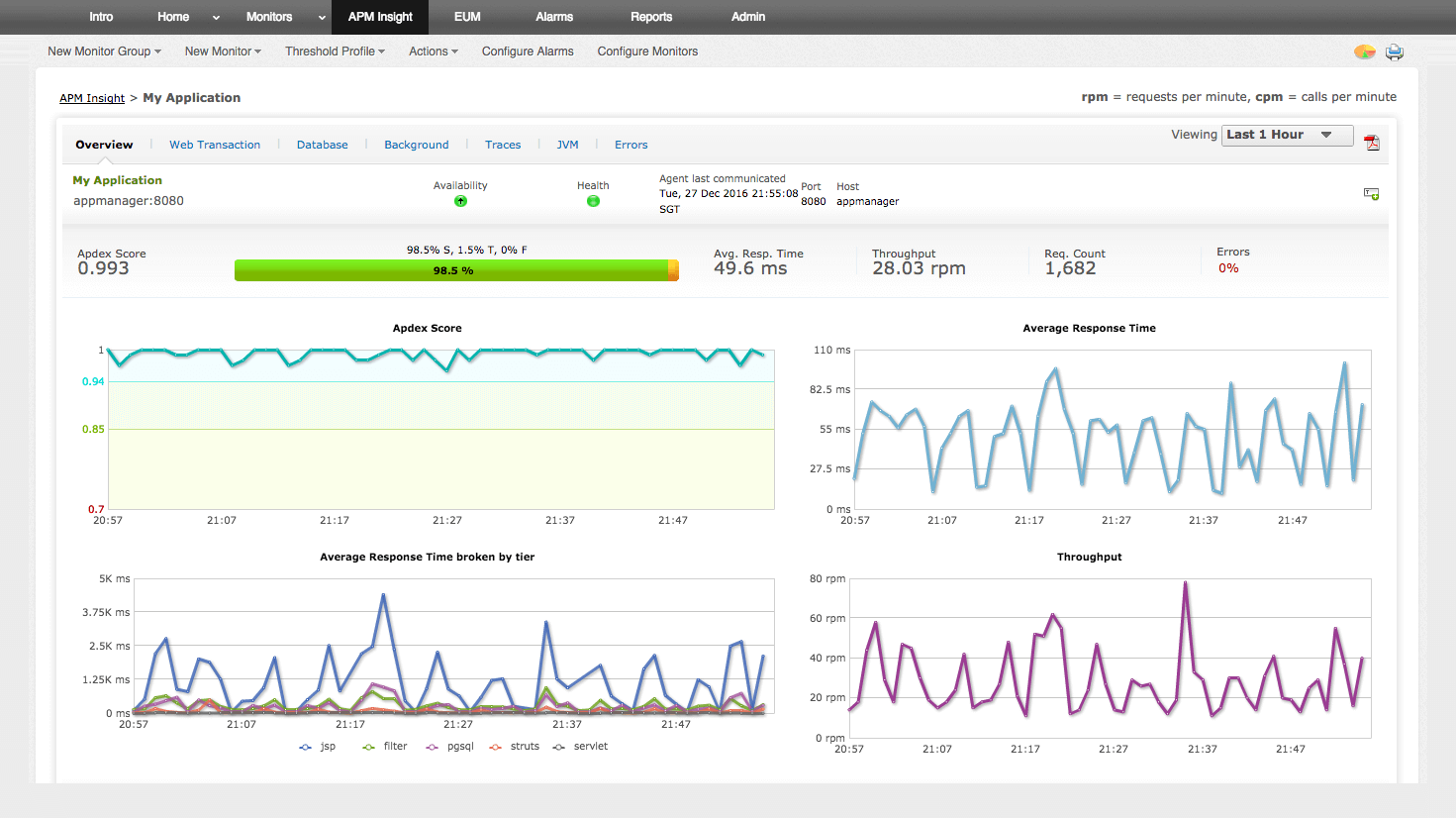
ManageEngine is a big name in network and applications monitoring, and their Applications Manager solution supports PostgreSQL monitoring. Applications Manager can monitor metrics like connection statistics, disk usage details, table scan details, query statistics, buffer statistics, and more. Data gathered by Applications Manager can be viewed in the form of charts and graphs, providing an easy-to-understand and interpret visual representation. These graphs also provide a useful way of viewing how metrics have changed over time, allowing you to identify patterns at a glance.
This tool also offers a highly responsive alerts system, which allows users to configure dynamic baselines for identifying performance anomalies. The root cause analysis capability lets you drill down beneath the surface and gain further insight. With APM Insight, another useful feature of Applications Manager, you can view application code and SQL queries to identify the source of an issue.
Applications Manager’s robust reporting features allow you to take a retrospective view of any performance issues identified. You can view historic performance and performance trends of PostgreSQL databases, which can inform long-term capacity planning. This accessible and advanced Postgres monitoring tool is available as a 30-day free trial.
Getting Started
Although there are many viable Postgres DB managers available on the market, SolarWinds DPM tops the ranks. DPM strikes an ideal balance between user-friendliness, versatility, and sophistication. This tool is enterprise-grade, scalable, cost-efficient, and well-supported. You can access a 14-day free trial here.


